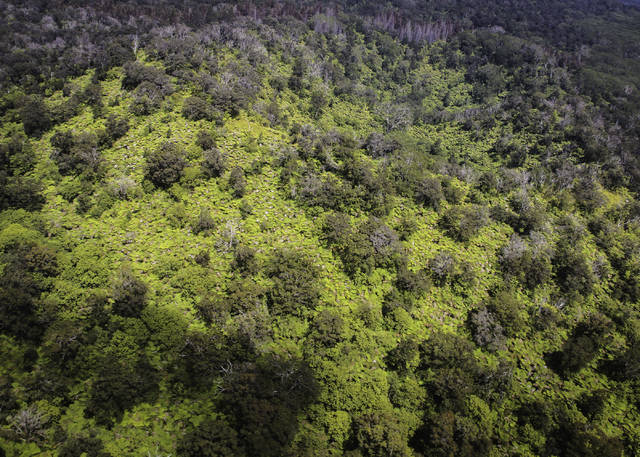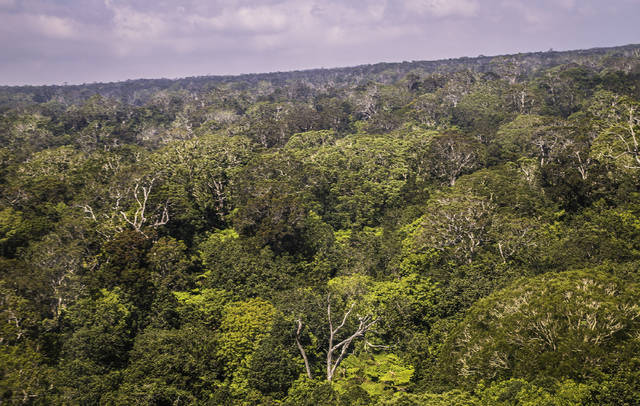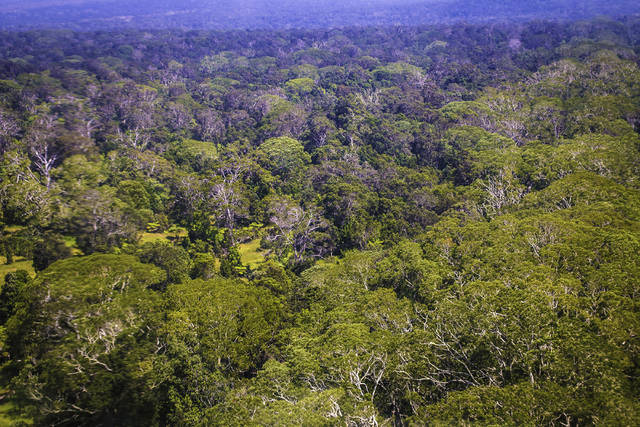KAILUA-KONA —The state Department of Land and Natural Resources, U.S. Fish and Wildlife Service and Kamehameha Schools on Friday signed a historic agreement to promote the recovery of 32 federally endangered species and one threatened species on Hawaii Island.
“This Safe Harbor Agreement encourages landowners to improve their habitat and restore their forests for endangered species to flourish. It establishes a baseline for existing levels of endangered species, allowing landowners to adopt more environmentally friendly land management practices without penalizing them if endangered species move into the area. I thank Kamehameha Schools for leading the way for Hawaii landowners to restore native landscapes,” said Gov. David Ige.
The agreement, along with the associated Enhancement of Survival Permit and Incidental Take License, is the largest of its kind with a single landowner in the nation. It covers 32,207 acres across Keauhou and Kilauea forest lands on the southeastern slopes of Mauna Loa owned by Kamehameha Schools.
“Partnerships like this are the foundation of conservation. This agreement will promote habitat improvement across the whole landscape in a way that not only benefits the protected and endangered species that live there, but also improves the entire watershed,” said Mary Abrams, field supervisor for the Pacific Islands Fish and Wildlife Office.
This agreement will likely result in significant and long-lasting changes to the entire landscape, including federally endangered Hawaii Creeper (Oreomystis mana), Hawaii ‘Akepa (Loxops coccineus coccineus), ‘Akiapola‘au (Hemignathus munroi), Io (or Hawaiian hawk, Buteo solitarius), Nene (or Hawaiian Goose, Branta sandvicensis), ‘Alala (or Hawaiian crow, Corvus hawaiiensis), ʻOpeʻapeʻa (or Hawaiian hoary bat, Lasiurus cinereus semotus), the threatened ʻIʻiwi (Vestiaria coccinea), and 25 endangered plant species.
Suzanne Case, DLNR Chair remarked, “This pact allows Kamehameha Schools to make landscape changes that improve the current ranges of the species, increase their populations, and reestablish wild populations. Just as important, the agreement will reduce habitat fragmentation and connect a network of protected and managed state, federal, and private lands within the south-central region of Hawaii Island.”







